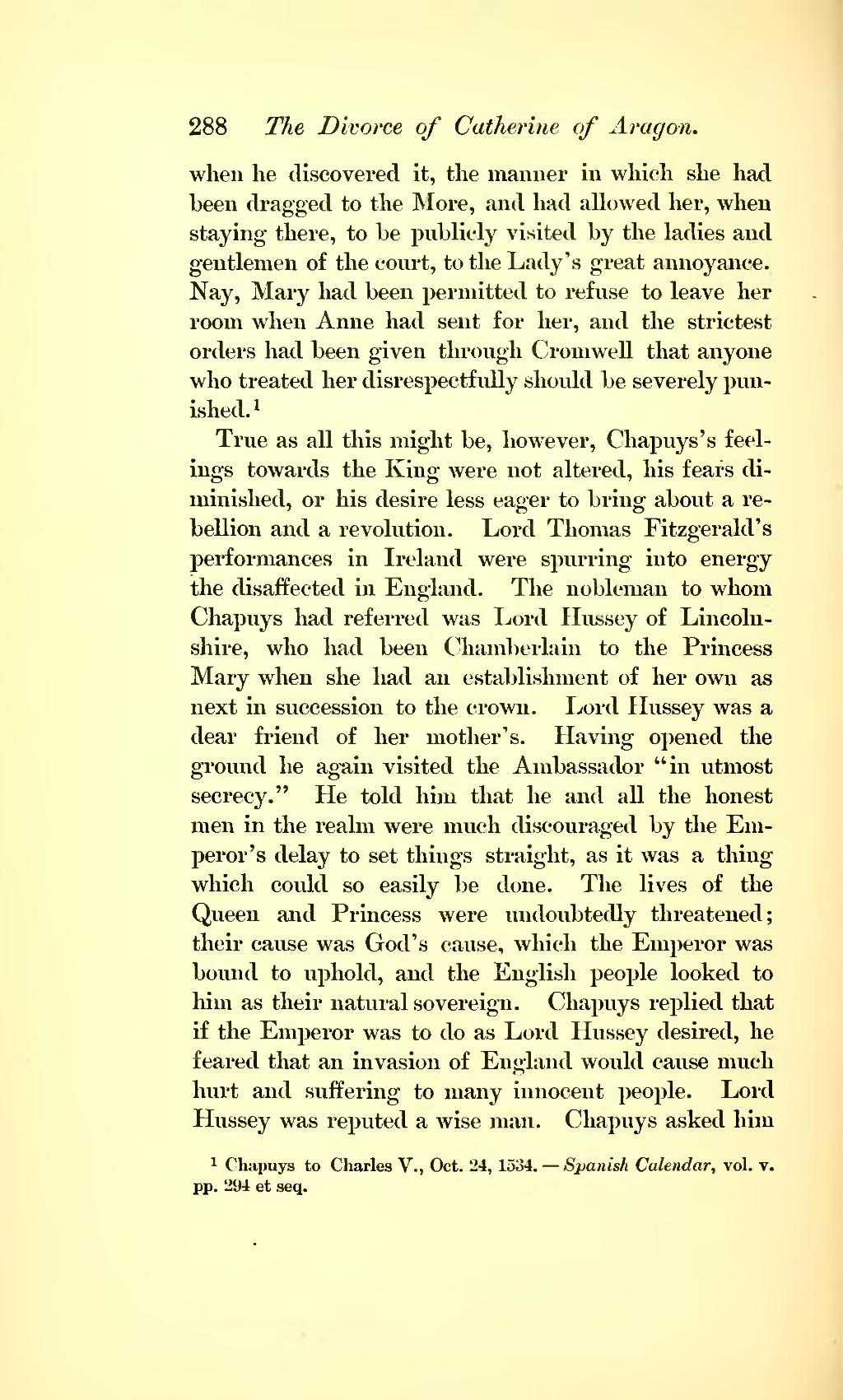when he discovered it, the manner in which she had been dragged to the More, and had allowed her, when staying there, to be publicly visited by the ladies and gentlemen of the court, to the Lady's great annoyance. Nay, Mary had been permitted to refuse to leave her room when Anne had sent for her, and the strictest orders had been given through Cromwell that anyone who treated her disrespectfully should be severely punished.[1]
True as all this might be, however, Chapuys's feelings towards the King were not altered, his fears diminished, or his desire less eager to bring about a rebellion and a revolution. Lord Thomas Fitzgerald's performances in Ireland were spurring into energy the disaffected in England. The nobleman to whom Chapuys had referred was Lord Hussey of Lincolnshire, who had been Chamberlain to the Princess Mary when she had an establishment of her own as next in succession to the crown. Lord Hussey was a dear friend of her mother's. Having opened the ground he again visited the Ambassador "in utmost secrecy." He told him that he and all the honest men in the realm were much discouraged by the Emperor's delay to set things straight, as it was a thing which could so easily be done. The lives of the Queen and Princess were undoubtedly threatened; their cause was God's cause, which the Emperor was bound to uphold, and the English people looked to him as their natural sovereign. Chapuys replied that if the Emperor was to do as Lord Hussey desired, he feared that an invasion of England would cause much hurt and suffering to many innocent people. Lord Hussey was reputed a wise man. Chapuys asked him
- ↑ Chapuys to Charles V., Oct. 24, 1534.—Spanish Calendar, vol. v. pp. 294 et seq.
